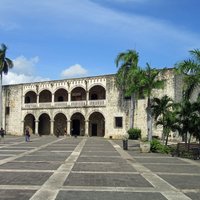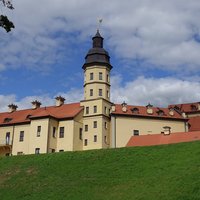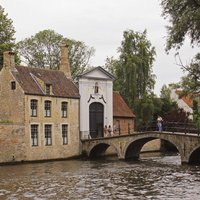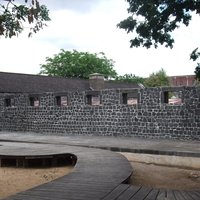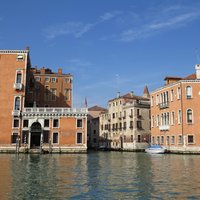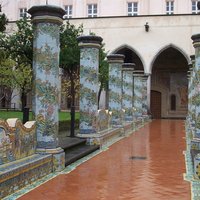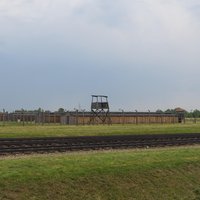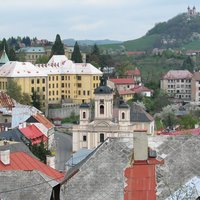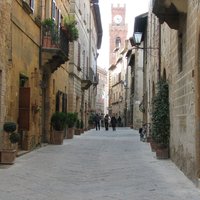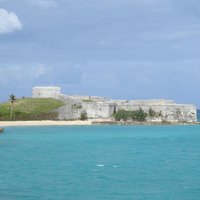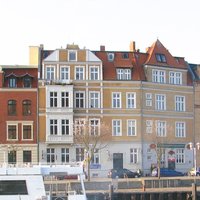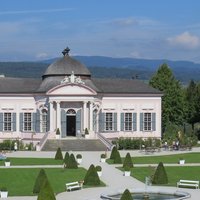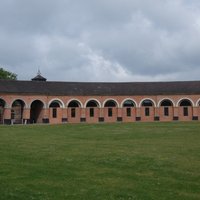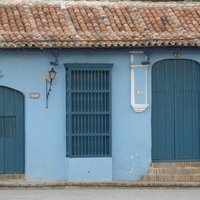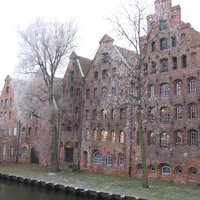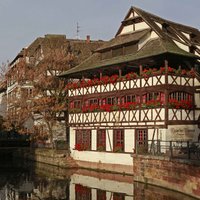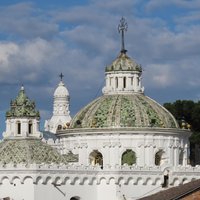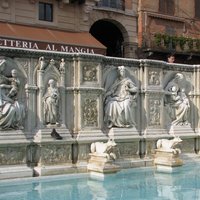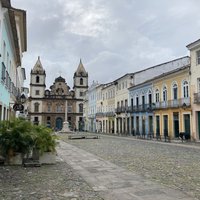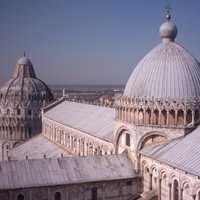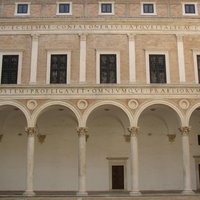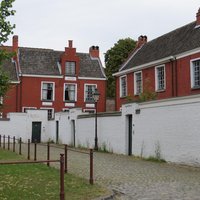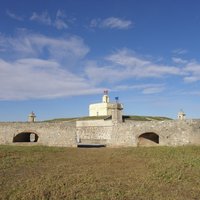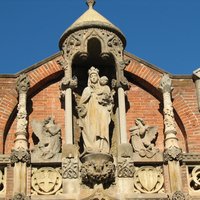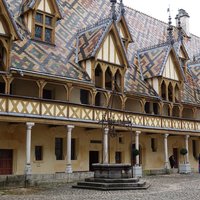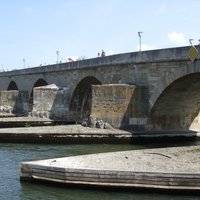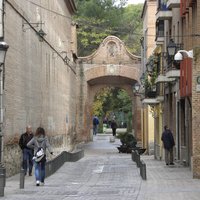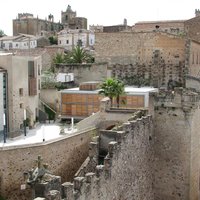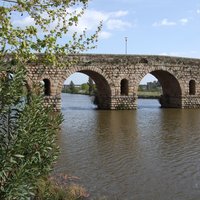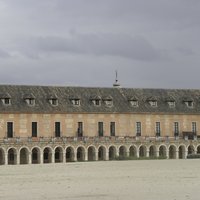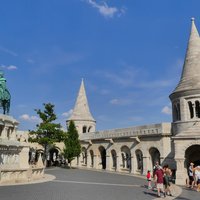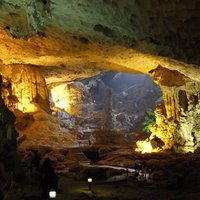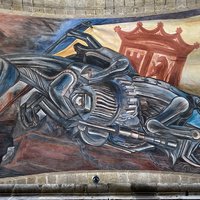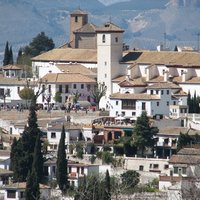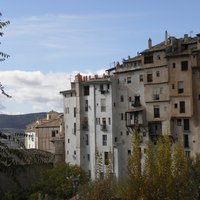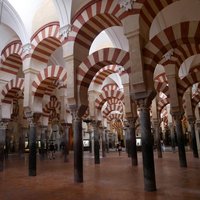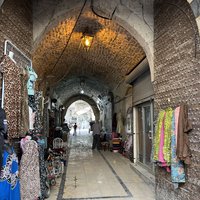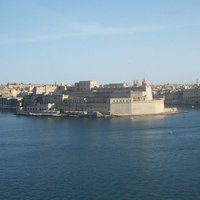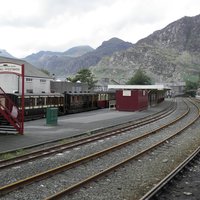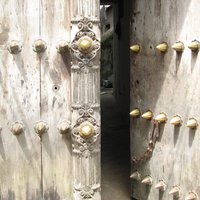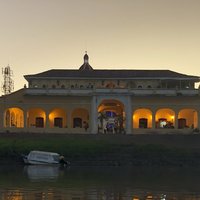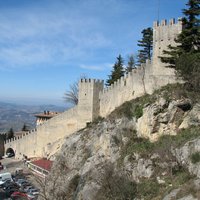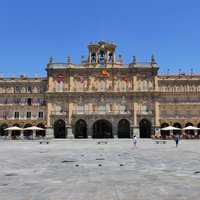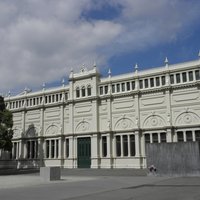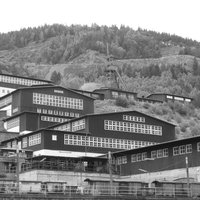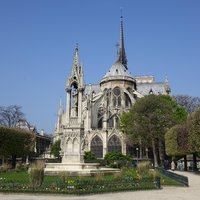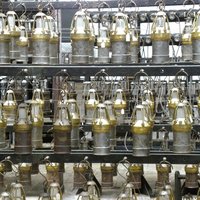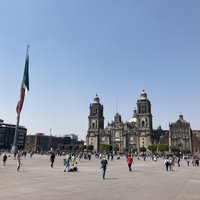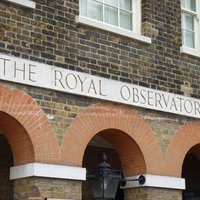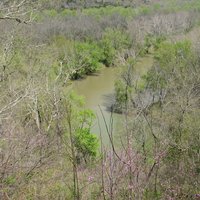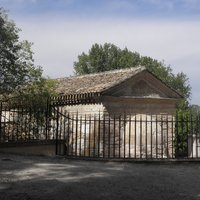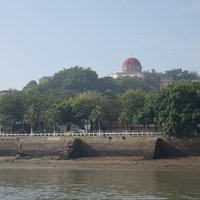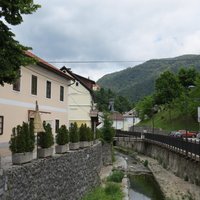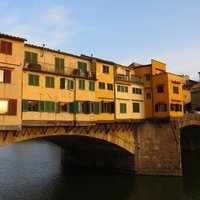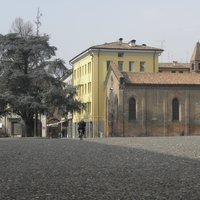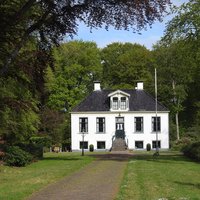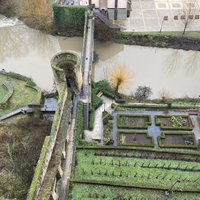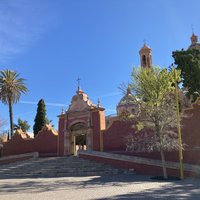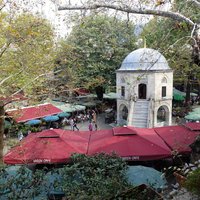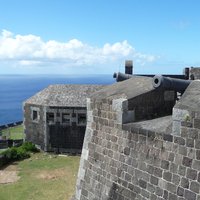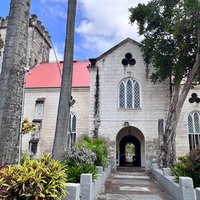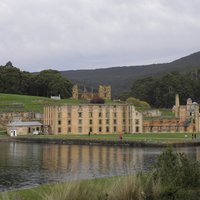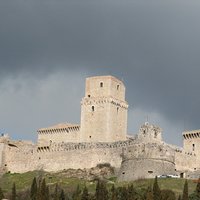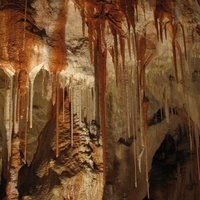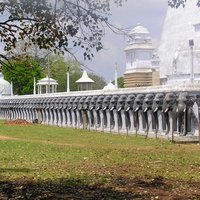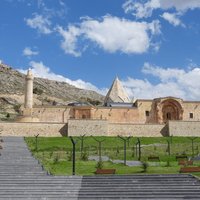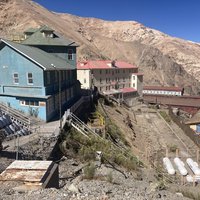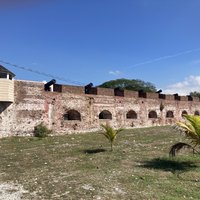Connected Sites
-
Hospital San Nicol?s de Bari (first hospital built of stone in the Americas)
-
Used as a sanitorium during the Soviet era
-
Saint John's Hospital
-
The original building of the Hospital Block, consisting of seven adjoining rooms, remains.
-
Hospital complex on Castello
-
Holy House of Mercy - former hospital
-
Ospedale L'Albergo Reale dei Poveri
-
The Nazis set up a number of "Hospitals" or "infirmaries" witthin the camp. Auschwitz I had "block 19, the Schonungsblock for convalescent prisoners; block 20, the contagious diseases block; block 21, the surgical block; and block 28, the internal medicine block." In reality of course the "treatment" included medical experimentation and selection for execution. Insofar as it existed at all it was aimed at "reducing the prisoner death rate" in relation to prisoners who seemed likely to return to labor in a short time.
See en.auschwitz.org.pl
-
The Ensemble included the hospital Sharbat Khānā or Shafā Khāna. (AB ev)
-
Old Hospital and Miners' Hospital in Banska Stiavnica, Miners' Hospital in Štiavnické Bane, Miners' Hospital in Hodrusa - Hamre
-
"Two structures with a social function, the hospital and the inn in front of the church of St Francis, were also built on his orders." (AB ev)
-
military hospital
-
Hospital zum heiligen Geist at Stralsund
-
Kloster Und in Krems served as a hospital.
-
Bois du Luc, hospice, built in 1861. It was extended with a hospital
-
San Juan de Dios
-
-
The medieval hospital was destroyed by fire but its wine cellars survived the fire and are still active.
-
Former Hospital and Church of San Roque, "built to provide health care due to the 16th-century plague epidemics"
See www.santiagoturismo.com
-
"The Chapel of the Hospital" - The chapel is all that remains of a hospital built during the reign of King Jayavarman VII (1125-1218 r from c1181) He is credited with constructing 102 hospitals within Cambodia, inspired by his Mahayana Buddhist beliefs.
See www.canbypublications.com
-
San Juan de Dios Hospital (now City Museum)
-
Santa Maria della Scala - "one of Europe's first hospitals and is one of the oldest hospitals still surviving in the world" (wiki)
-
The original hospice was replaced in the 15th century by the Great Hospital, built between 1440 and 1489, on the south side of the Street of the Knights. (AB ev)
-
-
The Ospedale Nuovo di Santo Spirito was "built in 1257 by Giovanni di Simone over a preexisting smaller hospital, the function of this hospital was to help pilgrims, poor, sick people, and abandoned children by providing a shelter."
See en.wikipedia.org
-
The hospital of Santa Maria della Misericordia now lies outside the old town, but dates back to the first half of the 14th century, and was originally established by the Fraternity of Santa Maria della Misericordia in Pian di Mercato (now Piazza della Repubblica), to house abandoned newborns.
See it.wikipedia.org
-
Civic Hospital built in 1822 (AB ev)
-
Many of the béguinages had an infirmary, e.g. Leuven, Tongeren, Sint-Truiden. (AB Ev) The size and importance of the infirmary varies from one béguinage to another. The most developed type includes the sick room with chapel according to the type of the medieval hospital, kitchens, beguines-nurses' quarters, guest quarters. (Nomination file, p. 16)
-
Military Hospital ... now part of the Hotel S
-
Located on the Haddadin Steps overlooking Al Ain Plaza, the English Hospital was considered the only hospital in the region of Trans-Jordan in the second half of the 19th century (nom file p29)
-
Hospital de Sant Pau: Although the hospital's current buildings date from the 20th century, the Hospital de la Santa Creu (the last part of its name, "Sant Pau", was added in honour of the banker, Pau Gil, who paid the new buildings in the twentieth century) was founded in 1401 when six small medieval hospitals merged. It was a fully functioning hospital until June 2009, when the new hospital opened next to it, before undergoing restoration for use as a museum and cultural center. (wiki)
-
-
St Katherinen Spital dates back to 1212
-
Hospital de Antezana (1483)
-
Hospital de los Caballeros
-
Xenodochium
-
Hospital de San Carlos, ordered by Charles III in 1750
-
"Hospital in the Rock" WWII hospital built into the caves under Buda Castle. Used later during the 56 rebellion and as a nuclear bunker.
See www.sziklakorhaz.hu
-
The Hospital Cave on Cat Ba was used as a secret hospital during the Vietnam War
-
It had the combined functions of a workhouse, hospital, orphanage, and almshouse.
-
-
Hospital of Santiago
-
Hospital del Cardenal Salazar
-
-
Ospedale Santo Spirito at Nizza Monferrato
-
The Sacra Infermeria, Built late 16th C. also called Brand Hospital and Station Hospital. Ceased being a hospital in 1918 - now the Mediterranean Conference Centre.
See en.wikipedia.org
-
Hospitals along the Via Francigena, e.g. hospitals of Le Briccole and Arcimboldo. The former Hospitals of S. Maria della Croce in Montalcino and Santa Maria della Scala in San Quirico d'Orcia. (Nomination file, p. 63, 71-72, 85, 120)
See it.wikipedia.org
-
-
Hospital Santa Cruz
-
Catholic Hospital
-
-
The Old Dispensary - built originally as a hospital but seems never have been used as such
See www.worldarchitecture.org
-
San Juan de Dios Hospital was founded in 1550, and is considered to be oldest hospital in America still functioning in its original building.
-
Ospedale di Stato (State Hospital): "It has been used as a Public Hospital until 1980, when it was restored as a high school." (Nomination file, p. 38)
-
The "Sir Titus Salt" hospital was built in 1868 as part of Salt's philanthropic vision for the town - "Salts hospital was opened in 1868 as a casualty ward for accidents in the Mill and then developed into a small hospital." It is now converted into flats (apartments).
-
Hospital del Estudio (dates from 15th century, now part of the University)
-
it was used a fever hospital during the First World War (Unesco website)
-
Several former pilgrim's hospitals are included in the Route, including ones in Toulouse, Pons and Figeac.
-
Includes several former hospitals for pilgrims, for example the ruins of the Hospital of Paradiella.
-
Former miner's hospital next to St. Ulrich Chappel in Goslar
-
"the second enclosure, made up of the Plaça Major, or Main Square, around which stand the remains of the hospital for the poor (...)" (OUV)
-
-
Les Invalides
-
Historical hospital at the Muristan
-
numerous hospitals, dispensaries, pharmacies, maternity clinics, milk depots, etc., for the miners and their families (AB ev)
-
Hospital of Jesus Nazareno. Built by order of Cortez. now a major active hospital but still including the early building.
See en.wikipedia.org
-
Greenwich Naval College was originally built as the "Royal Hospital for Sailors"
-
"In 1842, Dr. John Croghan, seeking a cure for tuberculosis, established an unsuccessful treatment center within the Mammoth Cave system. Two of the six patients' huts, erected in the cave, remain today." - Nomination File
-
Brescia: "The Monastery had service structures for the pilgrims reception and the poor housing. Historical sources recall the Xenodochio, which hosted the pilgrims, and the so called Peresindo's Hospital." (Nomination file, p. 89)
-
Hongning Hospital
-
under Austrian rule Wawel served as barracks and a military hospital
-
Qala'un complex
-
San Rafael Miners
-
Great Spa Towns of Europe
Austria, Belgium, Czechia, France, Germany, Italy, United KingdomInscribed: 202145817Mineral water hospital in Bath -
Santa Maria Nuova Hospital
-
The "Arcispedale Sant'Anna di Ferrara" Hospital, now outside the city, was originally founded in 1445 on the site of an ancient monastery of Augustinian friars from Armenia to which an oratory dedicated to Sant'Anna was linked. This was the first seat of the hospital, situated in the Piazzetta Sant'Anna. In 1927, the Sant'Anna was moved to a new location in Corso Giovecca.
See it.wikipedia.org
-
Carnuntum (ID No 31): The barracks, the central buildings principia (staff building), praetorium (accommodation for the legionary legate), the valetudinarium (camp hospital), three of the six tribune houses (officers' accommodation) and three larger farm buildings in the eastern half of the camp were almost completely excavated.
See de.wikipedia.org
-
On the north side of the rectangle of the former Second Institution in Veenhuizen, a wide avenue arose lined with high trees and houses (...). These include the former homes of the pharmacist and the doctor of the hospital situated behind. The houses and the hospital now accommodate hotel Bitter en Zoet. The former quarantine building has become a hernia clinic. (Nomination file, p. 66)
-
The Neumünster Abbey - "At the end of the 18th century, (...) the abbey was altered so as to house a military hospital which functioned until 1867."
See www.luxembourg-city.com
-
The grounds included an infirmary.
-
Former Royal hospital of San Juan de Dios of San Miguel de Allende (dating from 1770)
-
Yıldırım (Bayezid I) Complex: The hospital, which is included in this complex, was recently reconstructed and continues to serve its original function as an ophthalmic hospital. (AB ev)
-
Militairy hospital
-
-
Ruins of a hospital at Port Arthur
-
Monte Frumentario Palace was the old hospital of the community, and one of the first public hospitals built in Italy. (Nomination file, p. 31)
See www.visit-assisi.it
-
sanatorium at the Peace Cave
-
-
A two storey hospital (1228-1229) adjoins the mosque
-
Old Hospital
-
In the residential area built for the workers
-

